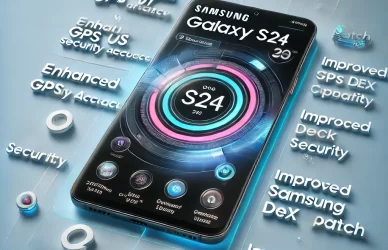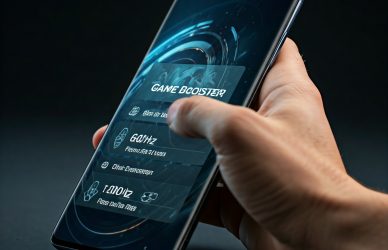According to reports from Reddit users, One UI 6, the latest version of Samsung’s custom Android skin, appears to lack built-in screen burn-in protection for status bar elements. This means that users with OLED displays running One UI 6 may experience screen burn-in issues, particularly in the areas where the status bar icons reside.
Screen burn-in is a permanent discoloration that can occur on OLED displays, caused by the organic materials in the pixels degrading over time. This can manifest as ghosting or fading of high-contrast elements on the screen. In the case of One UI 6, the lack of screen burn-in protection for the status bar means that the icons and text in that area may become permanently etched onto the display.
While Samsung has yet to officially acknowledge the issue, the reports from Reddit users suggest that One UI 6 indeed lacks the necessary pixel-shifting mechanism to prevent screen burn-in in the status bar. This is a concerning oversight, as OLED displays are inherently susceptible to screen burn-in, and the status bar is a static element that remains visible for extended periods.
Until Samsung releases an update to address this issue, users with OLED displays running One UI 6 should take extra precautions to minimize the risk of screen burn-in. This includes:
- Reducing the brightness of the display
- Using a darker theme
- Hiding the navigation bar when not in use
- Considering using a live wallpaper
If you are concerned about screen burn-in, you may want to consider avoiding upgrading to One UI 6 until Samsung releases an update with screen burn-in protection for the status bar.
Does One UI 6 have screen burn-in protection?
It appears that One UI 6 may not have screen burn-in protection. Reddit users have reported that devices with One UI 6 are experiencing screen burn-in. When tested, it appears the recently released OS lacks burn-in protection.
Samsung Screen Burn Issue What is screen burn-in? How can I prevent it?
Samsung Galaxy smartphones have been plagued by screen burn-in issues for several years, with the issue becoming increasingly prevalent in recent models. Screen burn-in is a permanent discoloration that can occur on OLED displays, caused by the degradation of organic materials over time. This can manifest as ghosting or fading of high-contrast elements on the screen.
What causes screen burn-in?
-
Static images: Displaying static images for extended periods, such as the navigation bar, status bar, or clock widget, can cause screen burn-in.
-
High brightness: Using the screen at high brightness levels can accelerate the degradation of OLED materials.
-
Auto-brightness: Auto-brightness can cause the screen brightness to fluctuate, putting stress on the organic materials.
-
OLED technology: OLED displays are inherently more susceptible to screen burn-in than LCD displays due to the nature of organic materials.
How can I prevent screen burn-in?
-
Minimize static images: Reduce the use of static elements on the screen. Use a darker theme, hide the navigation bar when not in use, and consider using a live wallpaper.
-
Lower screen brightness: Adjust the screen brightness to a comfortable level while avoiding excessively high brightness settings.
-
Disable auto-brightness: If auto-brightness causes brightness fluctuations, consider disabling it and manually adjusting the brightness.
-
Regular screen refresh: Some Samsung devices have a built-in screen refresh feature that helps alleviate screen burn-in by shifting pixels slightly.
-
Third-party apps: Third-party apps like “OLED Saver” can help prevent screen burn-in by periodically shifting pixels and reducing static image exposure.
-
Upgrade to newer models: Newer Samsung models may incorporate improved OLED technology and software optimizations to reduce screen burn-in risk.




